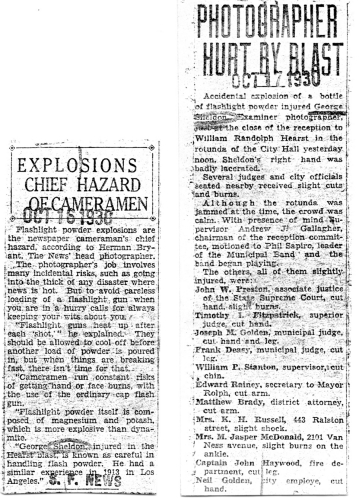
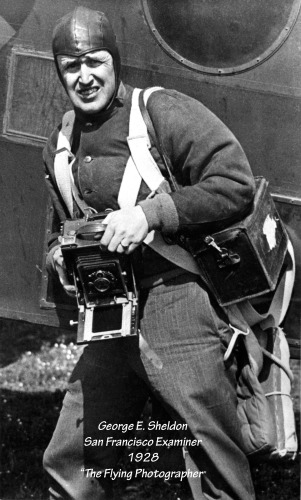
Flashlight powder explosions are the newspaper cameraman's chief hazard according to Herman Bryant, the news' head photographer. The photographer's job involves many incidental risk such as going into the thick or any disaster where news is hot. But to avoid careless loading of flashlight gun when you are in a hurry calls for always keeping your wits about you.
"Flashlight guns heat up after each shot," he explained. "They should be allowed to cool off before another load of powder is poured in, but when things are breaking fast, there isn't time for that. Cameramen run constant risk of getting hand or face burns, with the use of the ordinary cap flash gun. Flashlight powder itself is composed of magnesium and potash, which is more explosive than dynamite. George Sheldon is injured in the Hearst blast, is known as careful in handling flash powder. He had a similar experience in 1913 in Los Angeles.
San Francisco News
October 17th 1930
Accidental explosion of a bottle of flashlight powder injured George Sheldon Examiner photographer just at the close of the reception to William Randolph Hearst in the rotunda of the city Hall yesterday noon. Sheldon's right hand was badly lacerated. Several judges and city officials seated nearby received slight cuts and burns
Although the rotunda was jammed at the time the crowd was calm. With presence of mind supervisor Andrew J. Callagher chairman of the reception committee motioned to Phil Sapero, leader of the municipal Band and the band began playing. The other all of them slightly injured were:
John W Preston associate justice of the state supreme court, cut hand slight burns.
Timothy I Fitzpatrick Superior Judge, cut hand. Joseph M. Golden, municipal judge, cut hand and leg. Frank Deasy, municipal judge, cut leg. William P. Stanton, supervisor, cut chin. Edward Rainy, secretary to Mayor Rolph, cut arm. Matthew Brady, district attorney, cut arm. Mrs. K. H. Russel, 443 Ralston Street, slight shock. Mrs. M. Jasper McDonald, 2101 Van Ness Avenue, slight burns on the ankle. Captain John Haywood, Fire department, cut leg. Neil Gordon, city employee, cut hand.


George E. Sheldon, Press Photographer and Photographic Editor for the San Francisco Examiner from 1928 to his death in 1947, lost his thumb when his bottle of flash powder exploded while he was covering a story at the San Francisco City Hall on October the 16th in 1930. He was a well known photographer. Photo and newspaper clippings courtesy Mr. Philip Sheldon-San Francisco,
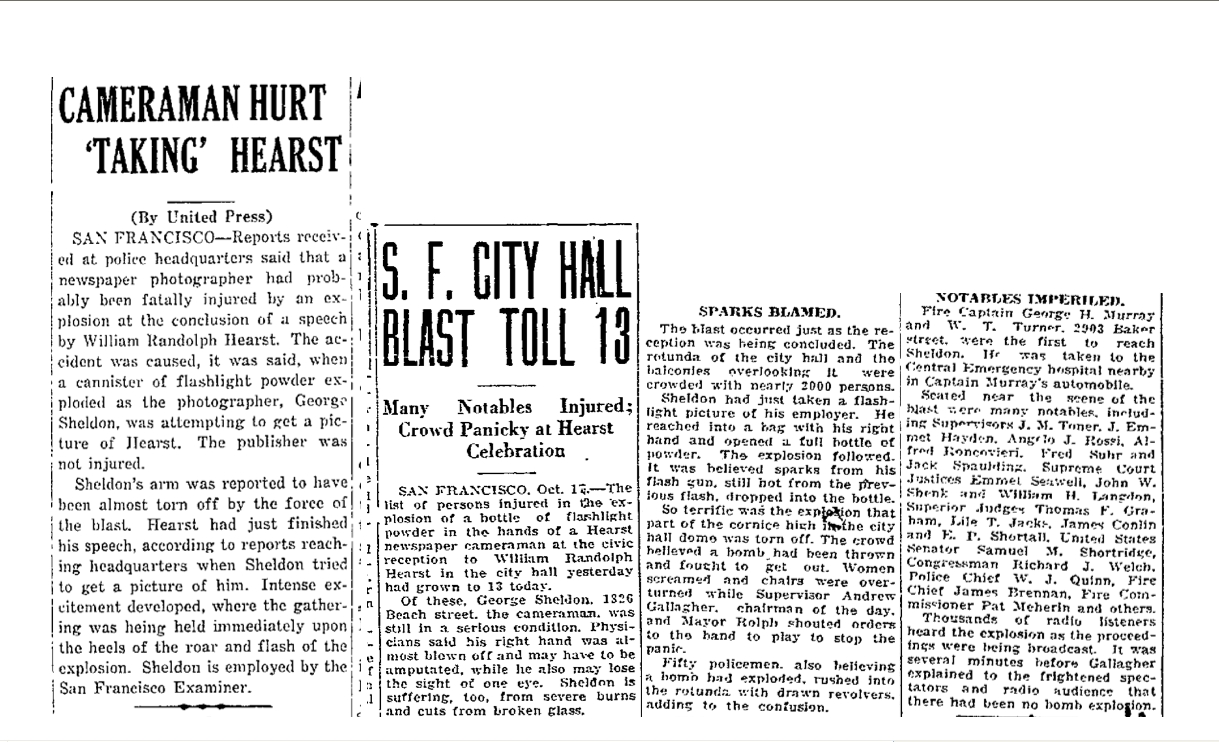
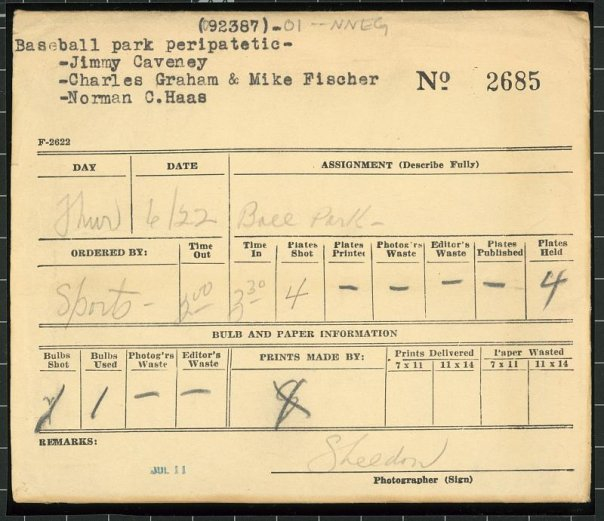
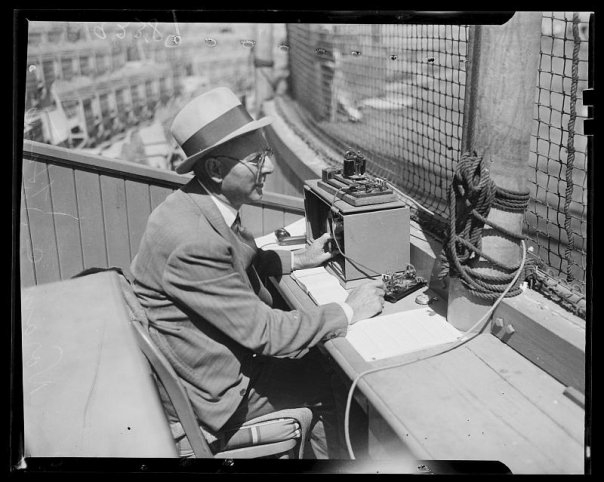
Hi Jo
I do remember stories of "pocket flash" happening from events when they use to have remote radio broadcast, it was wise to keep your distance from the remote broadcast vehicle, that also included police cars and ambulances. I have just recently had contact with the daughter of one Bob Bryant, one of my fathers colleagues. I'll as her has many anecdotal stories of these mishaps. When my brother and I went to the paper with my father we always asked for the used flash bulbs for souvenirs from the photographers that might be hanging around, we always tried to get them to give us a new bulb but they'd tell us they were to dangerous!
I don't know what the state of the art is now for processing film but back then it was all done by hand. I remember that the fingernails of my Dad's left hand were stained dark brown from constantly having his hand in the developer solutions. I haven't been in a dark room in many years but in my minds smell memory I know exactly what the place would smell like. The whole newspaper experience from a child's eyes was very exciting, we had to walk past the presses and when they were running the noise was unbelievable and the 'angry' pressmen were all yelling at each other.
Best Regards
Philip Sheldon.
After my Dad's recovery he lobbied very hard to get
flash powder outlawed. Many of the newspapers of that day did not want to spend
the money on the new 'flash bulb'
technology. Dad would be totally amazed if he could have experience today's
digital electronic cameras!
I do remember stories of "pocket flash" happening
from events when they use to have remote radio broadcast, it was wise to keep
your distance from the remote broadcast vehicle, that also included police cars
and ambulances. When my brother and I went to the paper with my father we
always asked for the used flash bulbs for souvenirs from the photographers that
might be hanging around, we always tried to get them to give us a new bulb but
they'd
tell us they were to dangerous!
Philip Sheldon - San Francisco
Nov 2009.